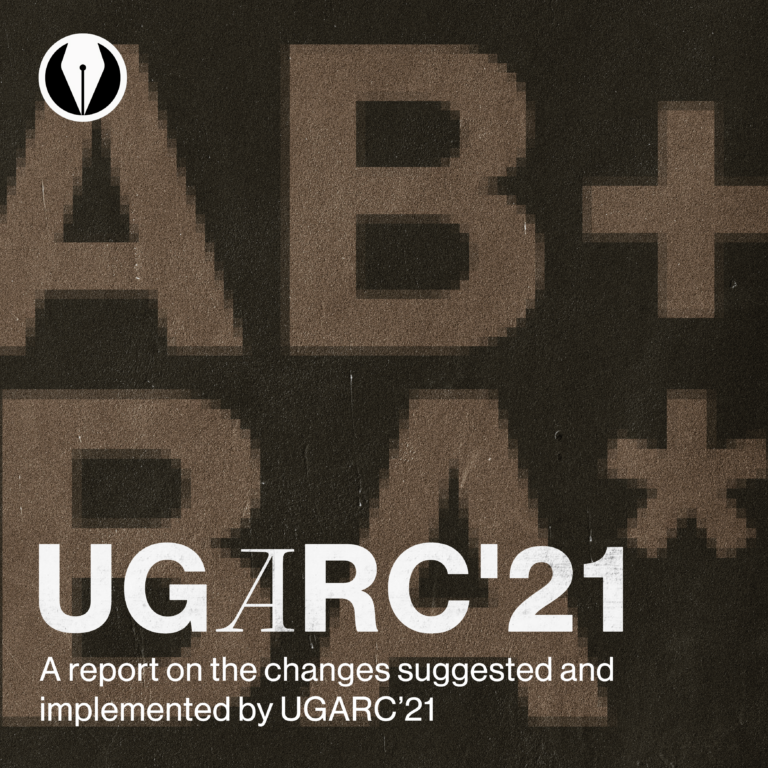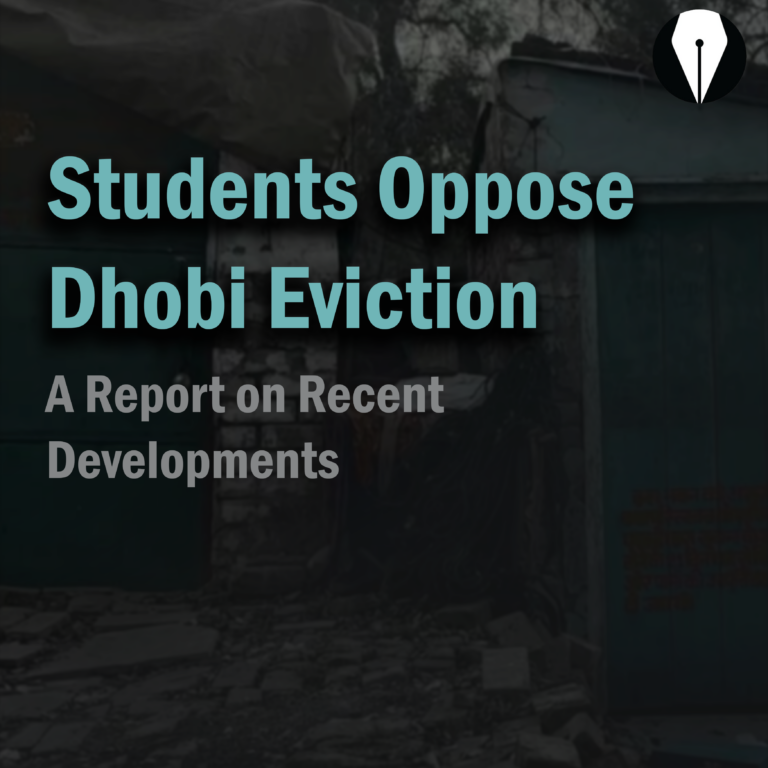Disclaimer: Vox Populi, IIT Kanpur, is the exclusive owner of the information on this website. No part of this content may be duplicated, paraphrased, or interpreted in any other way without written consent from Vox Populi. If you want to reproduce any of the content on this page, please contact our chief editors directly or reach out to us by email at voxpopuli@iitk.ac.in
In May this year, Hall 13’s Hall Executive Committee (HEC) completed its first tenure. As the next elections for HEC are around the corner, we explore the development of HEC, covering its initial setup, challenges, and recent changes. Vox spoke to hec members, alumni and conducted a survey to look at election problems, the unique block-wise system and reviewed past efforts to establish a functional HEC.
Background
A HEC is a committee that represents the collective views of the residents, coordinates with administration and manages the day-to-day functioning of the hall. It handles the hall budget; and arbitrates intra-hall disputes, if any.
The demands for creating an HEC in Hall 13 gained traction due to various issues faced by its residents. These issues included (but weren’t limited to):
- Hygiene in mess and cleanliness in hall premises
- Poor state of washing machines and washrooms.
- Bad mess food.
- Lack of basic amenities such as sports equipment.
The impetus for change was catalysed by a group of PG students from the design department, who had seen how HECs functioned at other halls. A PG student stated, “Almost all PGs had joined in,” emphasising the broad-based support for the initiative. Discussions with hall administration were carried out, but they proved inconclusive.
There were also previous attempts by UG Y22 students after COVID-19 to establish an HEC. However, their attempts were shut down with the reasoning that their tenure would be too short, given the time it takes for campaigning and elections.
Initially refusing their demands last year, the hall office and wardens eventually agreed to the formation of an HEC for Y23s after the Students’ Gymkhana got involved.
The Structure of the Hall 13 HEC
The HEC of Hall 13 follows a block-wise structure, with each block (A to F) having two positions for student representation, assigned randomly. In 2023-24, two wings in the F block were allocated to MDes students, so one HEC post, Mess Secretary, was reserved exclusively for them. Additionally, residents from each block can only vote for the two posts designated for their respective block.
Also, differing from other halls, there is an absence of a president within the HEC. When asked about the rationale behind this distinctive arrangement, Sambhav (a Y23 HEC member from MDes.) responded, “We aimed for a structure that ensures equitable representation of every block, so we can prioritise the concerns of each block.”
This framework was created by students during discussions with wardens, the hall office, and Gymkhana representatives. When asked about the same, Dhwanit Balwani, ex-PSG, said, “First-year students are new and don’t have administrative experience. They don’t know how to run a team of students together while leading as a president. They don’t have enough calibre for such a task. This can also result in one person having irregular power over others.”
Dhruv Misra, the current PSG, stated “The role of Hall President involves a significant amount of responsibilities, and it’s unfair to expect first-year students to be aware of all the nuances at the very outset. The responsibilities of the Hall President were dealt with majorly by Dhwanit (as PSG) and I (as Convener, CoSHA). There is no specific representative for Hall 13 in CoSHA, but all the concerns of the Hall are put forth by the Convener, CoSHA in the meeting, and since it is open to the entire campus community, the entire HEC or any individual from Hall 13 can attend.”
In our survey, 68% of Hall 13 residents largely agreed with Dhruv regarding not having a Hall President. Vox also attempted to reach out to the ex-Warden, Prof. Mohite, however, he was unavailable for comments.
Elections
The HEC elections, conducted by the Election Commission in October, took place two months after the Y23s arrived. The code of conduct was enforced immediately, followed by campaigning and a soapbox. Mess, Maintenance, and Sports secretary positions saw the highest nominations, with four contestants each. Cultural secretary had two candidates, while accounts and common room had one each.
On Election Day, a technical error in the online polling portal led to uncounted votes. A second round of voting using paper ballots was held the next day, but the turnout was significantly lower.
From the survey of 220 responses, 51% voted in both elections, while 23% did not vote at all. Among non-voters, 30% felt their votes wouldn’t matter, and 28% cited a lack of awareness and transparency.
NOTA won against candidates for Maintenance and Accounts, leaving these positions vacant. In the first HEC meeting, it was decided that one member would manage three positions, with no additional nominations, unlike other halls.
Tenure
The survey collected responses to gauge people’s impressions of how effectively the students believed the HEC could conduct its duties given its unique characteristics.
When the GBM was asked about their views on the block reservation system, 51% of the respondents opposed it. We then asked whether residents felt the HEC was biased towards one hall. Notably, nearly 44% of participants perceived such a bias, indicating a significant concern. Additionally, one of the residents mentioned, “The HEC closes the mess citing pest control whenever there is hall day in any of the parent halls,” and various others shared similar sentiments, suggesting potential influence from the parent halls.
Next, to assess the accessibility of the HEC to the residents, we asked them to rate it on a scale from 1 to 5, with 1 being not accessible at all and 5 being very accessible. The responses varied widely, ultimately averaging out to a score of 2.72, highlighting a significant disparity in residents’ perceptions of HEC accessibility.
When questioned if the HEC was able to make an impact in their tenure, 73% of people denied the notion. They pointed out the problems of washing machines not being solved despite continuous requests, and the quality of mess food fluctuating among other reasons.
We also sought residents’ opinions on two major HEC initiatives: the Diwali Celebration and the Hall Day Celebration.
The Hall Day Celebration received mixed reviews. Some responses pointed out issues with management by HEC and some deemed the event expensive. One respondent pointed out, “The Hall day celebrations created a lot of controversies and even fights within the hall residents and HEC. Even within the HEC all the members were not in favour of Hall day. It was somehow forced on the Hall residents. “
The Diwali Celebration received mainly positive reviews. With people calling it a better initiative than hall day. One respondent noted, “The HEC did an exceptional job organising the event, setting it apart from all other halls. From the morning Diwali Pooja to the evening firecracker show, everything was magnificent, attracting large numbers of attendees from other halls.”
History of H13 HEC
Note: The following part of the article is based on discussions with :
Deepankur Kansal, Y18, an HEC Member of Hall 13
Vedaant Sikka, Y18, President, Students’ Gymkhana 2021-22
- Sanidhya Rathore, Y19, an HEC Member of Hall 13, also the Chairperson, students’ Senate 2022-23
The first UG batch residents of Hall 13 were the Y18 batch. Initially, Hall 13 faced several issues, mainly regarding basic amenities in the mess. This led to a need for a Hall Executive Committee (HEC) to improve living conditions. Many students approached the Hall Warden, and it was decided to establish an HEC, but without elections.
The initial structure had each of the 36 wings selecting a wing representative among themselves. These 36 representatives were divided into four groups of nine, focusing on Mess, Maintenance, Sports, and Cultural activities. However, this structure faced difficulties as no one had signing authority for any of these domains.
To address this, the size of each group was reduced from nine to two, giving these individuals the authority to make decisions based on discussions with the entire group. This change reduced the total number of representatives from 36 to 8. Although this structure functioned better, many members lost interest over time, and the number of active members dwindled. By the end of the HEC’s tenure, some financial issues in Hall 13 led the warden to decide against having an HEC in the future.
When the Y19 batch arrived, they were not allowed to form an HEC. However, in November, a new warden, Professor PM Mohite, took charge. The President, Students’ Gymkhana and the Convener of COSHA resumed discussions with the new warden, successfully advocating for the formation of an HEC. This time, members were nominated based on interviews rather than elections, and notably, the HEC did not have a president.
Shortly after its formation, a mid-semester break happened, and as students did not return to campus due to COVID, limiting the HEC’s activities.
Later, during the tenure of Vedaant Sikka, the Convener, CoSHA for 2020-21,the initiative to form an HEC for the upcoming batches (Y20 and later) was takenl. A model for the same was discussed in the CoSHA and a proposal was passed which suggested the following:
- Having one Mess and Maintenance Secretary from each block (A to F), with one convener elected internally among them (one each for the mess & maintenance committee), to ensure better division of work among more members and equal representation of each block; considering that Hall 13 has higher workload as compared to other halls
- For other responsibilities, the proposal suggested having a Student-Activities Committee, consisting of 6 student representatives, one from each block. The Committee was expected to deal with all matters pertaining to the extra-curricular activities organised by/in the Hall.
- It also suggested that a legislative committee be formed consisting of the 3 wardens, Chairperson, CoSHA (or nominee), 4 Parent Hall Representatives (HEC members of parent halls recommended by the CoSHA and approved by the Warden In Charge) This committee should oversee Hall 13 matters in coordination with other HEC members and warden.
Overall, it was stressed that Hall 13’s concept differed from other UG halls, focusing primarily on improving facilities and organising cultural events like Hall Day v/s the role of parent UG HECs which additionally involves participating in GC & other inter-hall events.
However, due to uncertainties about the residence and the late arrival of the Y20 and Y21 batches, the formation of the HEC did not work out as planned. Furthermore, the structure was not carried forward for subsequent batches of Y22 and Y23.
Vedaant believes that a better structure to implement for HEC would resemble his proposal.
He also discussed how the mixing of undergraduate and postgraduate students in the halls, initially implemented as a temporary measure due to a crunch in hall capacity, is not the ideal model, due to their fundamentally different expectations from halls. With the recent increase in hall capacity, he emphasised the need to revisit this arrangement and reduce UG-PG mixing in halls to the extent possible
Future
As this tenure of the Y23 HEC has concluded, some faith has been built that freshers can handle their own affairs. The current HEC has vowed to ensure that the next HEC is formed and a transfer of power takes place smoothly. They have secured support from the warden for future tenures. Starting next year, any vacant HEC positions could be filled through the standard renomination and interview process in consultation with the warden.
With a new HEC set up in Hall 13, questions come up about how to ensure fair and adequate representation. Considering the significant presence of postgraduate students in other UG halls, should their representation be proportional to their numbers there as well? Similarly, does the precedent set by Hall 13 suggest that fresher undergraduate girls should have representation in the HEC of Hall 4? These are questions that merit further investigation.
Written by: Kumar Shubham, Harsh Ashok Kumar, Himanshu Mahale
Edited by: Sruthi, Pranav, Kaushal
Designed by: Pankhuri Sachan









